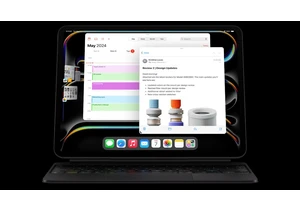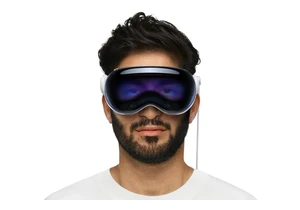The best gaming keyboards can make you feel in total control while sweating through an online shooter and more comfortable while taking in a 100-hour RPG. They may not always feel as luxurious for typing as a custom mechanical keyboard, but they’ve become increasingly sophisticated with new features to improve your play, and the best of them are still huge upgrades over your everyday membrane board. If you’re looking to buy one, I’ve spent way too much time researching gaming keyboards over the past couple of years, testing dozens of well-reviewed and boutique models along the way. Whether you want something small, wireless or just plain cheap, here are the ones that have stood out the most.
What to look for in a gaming keyboard
To be clear, any keyboard can be a “gaming keyboard.” If you play lots of video games today and have never sighed to yourself, “man, this keyboard is holding me back,” congratulations, you probably don’t need to pay extra for a new one. Self-proclaimed gaming keyboards often come at a premium, and while the best offer high-quality designs, snazzy RGB lighting and a few genuinely worthwhile features, none of them will give you god-like skill, nor will they suddenly turn bad games into good ones.
Mechanical vs non-mechanical
Now that we’ve touched grass, I did prioritize some features while researching this guide. First, I mostly stuck to mechanical keyboards, not laptop-style membrane models. They can be loud, but they’re more durable, customizable and broadly satisfying to press — all positive traits for a product you may use for hours-long gaming sessions.
Size
Next, I preferred tenkeyless (TKL) or smaller layouts. It’s totally fine to use a full-size board if you really want a number pad, but a compact model gives you more space to flick your mouse around. It also lets you keep your mouse closer to your body, which can reduce the tension placed on your arms and shoulders.
Switches, keycaps and build quality
Linear switches, which are often branded as “red,” are generally favored by gamers. These give keystrokes a smooth feel from top to bottom, with no tactile “bump” that could make fast, repeated presses less consistent. They usually require little force to actuate, and they tend to be quiet. However, if you prefer the feel and/or sound of a more tactile or clicky switch, get one of those instead. You might lose some speed in esports-style games, but nothing is more important than your comfort.
Some gaming keyboards are based on different mechanisms entirely. Optical switches, for instance, use a beam of light to register keystrokes, while Hall effect switches use magnets. These often feel linear, but they allow for a more versatile set of gaming-friendly features, such as the ability to set custom actuation points, assign multiple commands to one key and repeat key presses faster. In general, they’re faster and more durable too.
This analog-style functionality has become the big trend in the gaming keyboard market over the last few years. Most of the major keyboard brands now sell at least one model with Hall effect switches and, based on my testing, it’s easy to see why: Many of their customizations really can give you a more granular (yet still fair) sense of control, especially in more competitive games. Consequently, many of our picks below are built around the tech.
Keyboards with these kind of features usually aren’t cheap, however, and they’re far from essential for those who mainly play single-player games. Some of their tricks have also stirred up controversy: One known as SOCD (Simultaneous Opposing Cardinal Directions) cleaning allows you to activate two different directional keys at the same time, making it possible to, among other things, achieve ">impossibly perfect strafing in shooting games. A few games such as Counter-Strike 2 have banned the feature as a result, though it can still be a fun thing to play around with in games that don’t involve other people. SOCD isn’t limited to magnetic switches either; some mechanical keyboards support it too.
A few recent keyboards have introduced inductive switches, which promise the adjustable actuation features of Hall effect keyboards but with better battery efficiency. I haven’t been able to test one of these just yet, but we’ll look to do so in a future update.
Keycaps and build quality
Regardless of switch type, you want a frame that doesn’t flex under pressure, keys that don’t wobble and stabilizers that don’t rattle when you hit larger keys like the spacebar. I prefer double-shot PBT (polybutylene terephthalate) keycaps over those that use cheaper ABS (acrylonitrile butadiene styrene) plastic, as they won’t develop a greasy shine over time and their icons won’t fade. A hot-swappable PCB (printed circuit board) that makes it easy to change switches if the mood arises is ideal, as are dedicated media keys.
For the sake of simplicity, I only considered prebuilt gaming keyboards for this guide, though many of the picks below allow for customization down the line. If you (and your bank account) really want to go wild, check out our guide to building a custom keyboard.
Software, connectivity and RGB
If a keyboard has companion software, it should let you program macros and custom key bindings for games without frustration. For convenience, a wired keyboard should connect through a detachable USB-C cable. A good wireless keyboard won’t add serious lag, but only if it uses a USB receiver, not Bluetooth. (It’ll probably cost more as well.) Some gaming keyboards advertise super-high polling rates — i.e., the speed at which a keyboard reports to a computer — to reduce latency, but unless your monitor has an especially fast refresh rate, the usual standard of 1,000Hz should be fine. And while nobody needs RGB lighting, it’s fun. Consumer tech could use more of that, so the cleaner and more customizable the RGB is, the better.
How we tested
The best way to evaluate a keyboard is to just… use it, so that’s what I did. To cover a variety of use cases and design styles, I’ve researched dozens of keyboards over the past several months that’ve broadly received high marks from professional reviewers and users alike. I’ve then used each model I’ve brought in as my daily driver for numerous days. Since I write for a living, this gave me enough time to get a strong sense of each keyboard’s typing experience.
For gaming, I give special focus to each keyboard’s responsiveness in fast, reaction-based online shooters such as Halo Infinite, Counter-Strike 2, Apex Legends, Valorant, Overwatch 2 and XDefiant, as many would-be gaming keyboard buyers get one in the hopes that it’ll help with that genre in particular. I made sure each keyboard felt comfortable with other types of games, though, such as Baldur’s Gate 3 (a turn-based RPG), Hi-Fi Rush (an action game with an emphasis on timing and rhythm) and Forza Horizon 5 (an arcade racing game). I used the latter to better evaluate the pressure-sensitive features of the analog keyboards I tested.
If a keyboard could be configured with multiple switch types, I got the linear model. Upon receiving each keyboard, I removed several keycaps to ensure none were chipped or broken. I noted whether any keys felt wobbly, whether the case flexes under pressure, whether the texture and finish of the keycaps changes after use and whether larger keys like the spacebar felt particularly rattly or hollow. I typed on each keyboard in quick succession in a quiet room to get a sense of where they ranked in terms of noise. For wireless models, I checked whether the battery drain at 50 percent RGB brightness aligned with a manufacturer’s estimate. I looked to results from sites like Rtings to ensure nothing was out of order with latency. I did my own testing on a 144Hz monitor with my personal rig, which includes a 10th-gen Core i9 CPU and an RTX 3080 GPU.
This helped me ensure each keyboard met a baseline of overall quality, but to reiterate, so much of this process is subjective. I can tell you if a keyboard is loud based on how I slam my keys, for instance, but you may have a lighter touch. What my tastes find “comfortable,” “pleasing,” or even “useful,” you may dislike. As I’ve written before, keyboards are like food or art in that way. So, keep an open mind.
Other gaming keyboards we tested
Note: The following is a selection of noteworthy gaming keyboards we’ve put through their paces, not a comprehensive list of everything we’ve ever tried.
Wooting 60HE+
You can consider the Wooting 60HE+ our “1A” pick, as it’s essentially a more compact version of the 80HE with a 60 percent layout. It supports the same analog gaming features, has the same four-year warranty and still uses the great Wootility software. It’s also $25 cheaper. If you prefer a smaller design and don’t need arrow keys, you can buy it with confidence. However, more people will find the 80HE’s larger layout easier to use on a day-to-day basis. Its gasket mount, updated switches and extra sound-dampening material make it more pleasant-sounding and comfier for typing out of the box. Plus, while the 60HE+ can only rest at one fixed angle, the 80HE comes with a few sets of removable feet.
Logitech G Pro X TKL Rapid
The Logitech G Pro X TKL Rapid is a good magnetic-switch alternative to the Wooting 80HE if you must buy from one of the major keyboard brands. It’s wired-only, but it looks good, with clear RGB lighting, a built-in volume roller, dedicated media keys and a sturdy metal top plate. The expected rapid trigger and adjustable actuation tricks all work fine, and Logitech’s G Hub software is easier to get around than most apps from the big-name manufacturers. It can recognize when you’ve launched certain games, for instance, then apply any custom profiles you’ve made for them automatically. All of it costs $30 less than the 80HE as well. Where it falls short is the typing experience: The default switches are pretty noisy, and bottoming out the keys feels stiffer here compared to our top picks. If you want those Wooting-style features and prefer a clackier sound, however, it’s a decent buy.
Logitech G Pro X TKL and G Pro X 60
Zaloguj się, aby dodać komentarz
Inne posty w tej grupie




Spoilers for “The Robot Revolution.”
The start of any season of Doctor Who is important, doubly so when there’s a new co-star to introduce. “The Robot Revo


On April 14, Waymo will start testing its r
This installment of our reviews roundup goes in several different directions. We've got an excellent Android phone, some smart glasses and a powerful CPU. Plus, we revisited our old pal the iPhone
